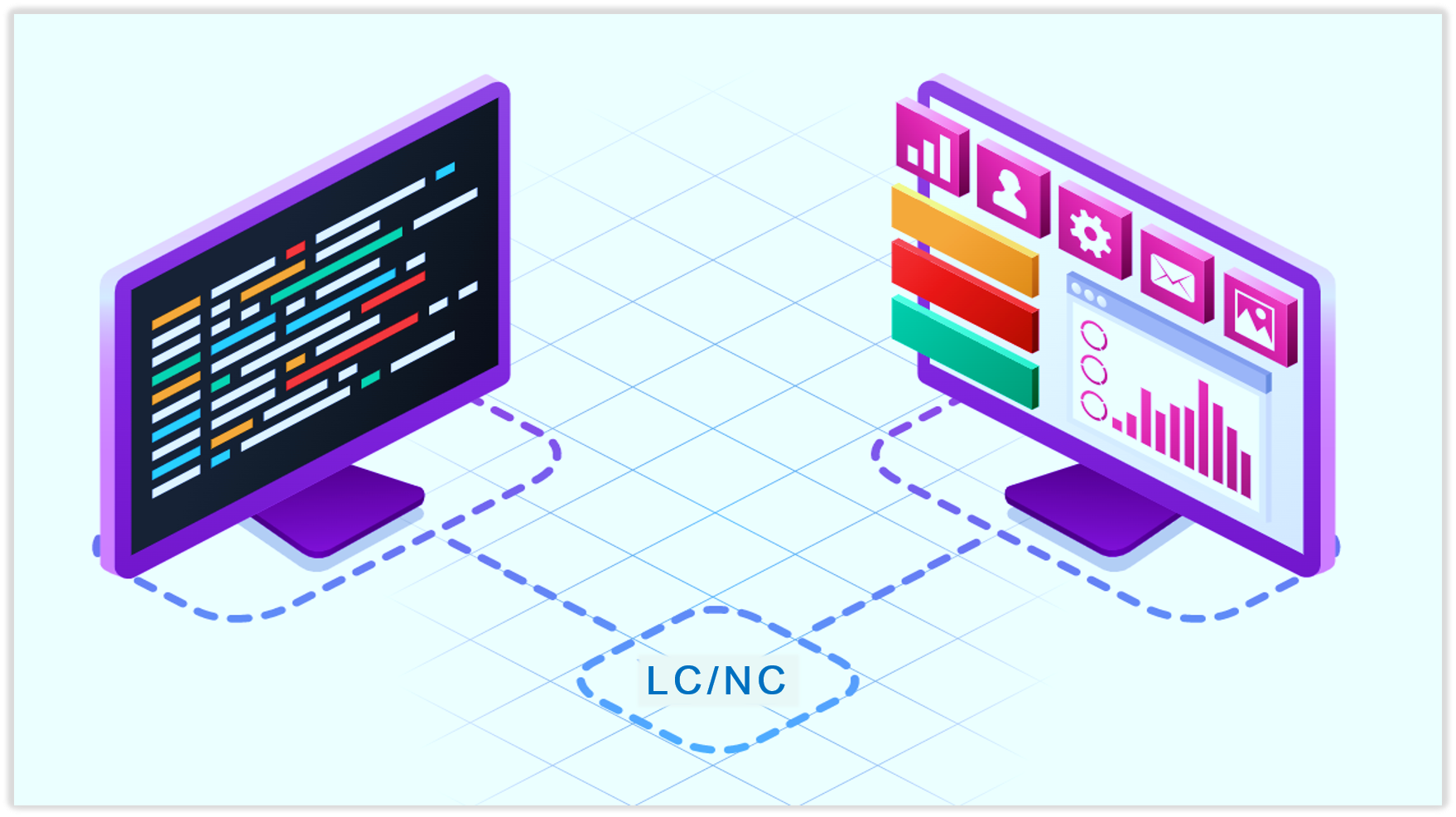Low-Code/No-Code (LCNC) Application Development: Revolutionizing Business Solutions
In the realm of application development, businesses traditionally faced two options: purchasing pre-made apps from external vendors or crafting customized solutions from the ground up, employing skilled developers and coders. However, the contemporary landscape witnesses the ascent of low-code/no-code (LCNC) development methods, empowering users throughout various business domains.
LCNC platforms harness intuitive, graphical interfaces, enabling users to swiftly create applications and automate business processes without the necessity of coding line by line. Embracing LCNC tools promises enhanced user accessibility, fostering innovation while alleviating strain on IT departments. This leap in technology ensures application development is accessible to everyone.
Decoding Low-Code and No-Code Development
Low-code involves designing applications using graphical tools and embedded functionalities, significantly reducing traditional coding requirements. While some code writing remains, low-code streamlines the development process, facilitating quick initiation.
On the other hand, no-code extends a similar user experience but eliminates the need for any code writing, catering even to non-technical users.
Distinguishing Low-Code vs. No-Code
The pivotal difference lies in the user’s coding expertise. Low-code platforms require basic coding skills for developing and integrating complex applications, whereas no-code platforms demand no programming knowledge. Given the diverse technical skills within organizations, many platforms offer both low-code and no-code tools.
Empowering Citizen Developers
Empowering subject-area specialists as “citizen developers” ensures that those with domain-specific expertise actively contribute to app development. LCNC platforms facilitate collaboration between department leaders and IT professionals, streamlining the implementation of suitable technologies and processes.
How LCNC Tools Operate
LCNC development platforms operate on model-driven design, automatic code generation, and visual programming principles. These platforms cater to users familiar with business workflows, empowering them to design applications regardless of coding expertise. Notably, this collaboration doesn’t just empower non-technical users; it synergizes them with experienced developers.
Applications Across Industries
LCNC platforms find applications across diverse sectors:
Supply Chains: Address challenges by developing responsive applications, automating workflows, and integrating legacy data for improved traceability and analytics.
Manufacturing: Utilize LCNC for process modeling, smart factories, and leveraging IoT networks, enhancing efficiency from raw materials to finished goods.
Finance and Accounting: Design custom applications for tax filing, financial disclosures, loan approvals, and risk assessments, optimizing workflows.
Human Resources: Automate hiring processes, candidate filtering, and training programs, relieving strain on IT resources.
IT Departments: Streamline processes, reduce bottlenecks, and enhance agility, allowing IT professionals to focus on strategic initiatives.
Benefits of LCNC Platforms
The widespread adoption of LCNC platforms results in numerous business advantages:
Simplicity: Development is simplified, focusing on fulfilling user requirements.
Speed: Swift adjustments and integrations make development up to 20 times faster than traditional coding.
Automation: Establishing rules automates workflows, aided by AI and machine learning for suggestions.
Cost Efficiency: Reduced time and simplified maintenance translate to cost savings and inexpensive testing of new ideas.
Agility: Quick development responds to changing demands and regulatory issues, broadening the developer pool.
Enhanced Customer Experience: Responsive applications tailored to customer feedback boost loyalty.
Privacy and Security: In-house sensitive tasks minimize breach risks and cybercrime.
The rising dominance of LCNC tools forecasts a transformative shift in app development, ushering in an era of accessibility, efficiency, and innovation across industries worldwide.
Conclusion
In the ever-evolving landscape of application development, the rise of Low-Code/No-Code (LCNC) platforms represents a transformative leap forward. These innovative tools redefine how businesses conceptualize, design, and implement applications across various sectors.
The allure of LCNC lies in its democratization of app development, empowering users from diverse backgrounds with varying technical expertise. The intuitive interfaces and simplified workflows enable swift application creation and process automation without the need for extensive coding knowledge. As a result, LCNC platforms foster collaboration between IT professionals and subject-area specialists, nurturing a new breed of “citizen developers” who actively contribute their domain-specific insights to the development process.
The benefits are manifold: increased agility, faster development cycles, cost-efficiency, heightened automation, and enhanced customer experiences. Moreover, LCNC tools bolster data integration, streamline workflows, and fortify privacy and security measures, reinforcing their position as a cornerstone of modern business operations.
Industries, spanning from supply chains to finance and HR, are harnessing LCNC capabilities to address challenges, optimize processes, and drive innovation. This technology’s ubiquity extends its influence across organizational structures, empowering departments to swiftly adapt to market demands and regulatory changes.
As the adoption rate of LCNC platforms skyrockets, their integration into the fabric of businesses worldwide becomes imminent. The trajectory suggests that these tools will continue to evolve, unlocking further potentials and efficiencies, thus shaping the future of application development and business operations on a global scale. As businesses continue to embrace this revolution, the promise of LCNC lies not just in its capacity to streamline processes but also in its ability to foster innovation, accessibility, and efficiency for all.



